Our history
-

It was in 1955...
A family holiday in Tuscany. Father Hermann Seitz takes pictures for the family album. However, he is not quite happy with the results. If only his relatives and friends back home could see the landscape the way he saw it in reality.
Back home Hermann Seitz gets to work, his thoughts circle around a camera that rotates.
-

1955 - first Seitz camera
Conceived as the first Seitz panorama camera, this compact model featured a 16mm roll film with a 10mm lens. Hermann Seitz used this camera to shoot continuous 360° images from the top of the family car.
-
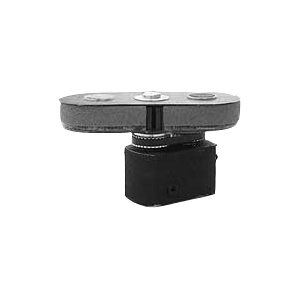
1958 - second Seitz camera
Based on the 1955 model, this version also used 16mm roll film. It was equipped with double sized film spools. The exposure times were adjusted by using slits with different widths.
-

1960 - Seitz 75mm
With this new model Seitz expanded the film to 70mm and used a 75mm Schneider lens, allowing a much higher image quality.
-

1965 - Seitz 47mm camera
Equipped with a 47mm Schneider lens exposing on 120/220 roll film, this new camera created much shorter panoramas. This made the enlargement of the final panorama with existing equipment much easier.
-

1970 - Seitz 35mm
Designed by Seitz and manufactured by Arca-Swiss, this 35mm film camera never went into serial production.
-

1971 - Seitz 10mm
Built in a waterproof case with integrated light, this 10mm camera with 35mm film was used for pipeline inspection. It had two lenses, either for sequential or for stereo image taking.
-

1974 - Seitz 18mm with video
This camera was an upgraded model combining panorama images on 35mm film with video technology for positioning, again used for pipeline inspection.
-

1975 - Seitz 24mm
Equipped with a larger 24mm focal length on 35mm film, this panorama camera scanned the interiors of larger pipeline tubes.
-

1977 - Seitz 75mm
Seitz built again a panorama camera using a 75mm lens and dual use film (70mm and 120/220), designed for high-end image quality.
-

1978 - Seitz 28mm
Especially designed for a customer, this camera used 35mm film and a 28mm Leitz Elmarit lens with shift.
-

1979 - SM 24
The Seitz-Meister camera used a 24mm lens and a 35mm film for tube inspection.
-
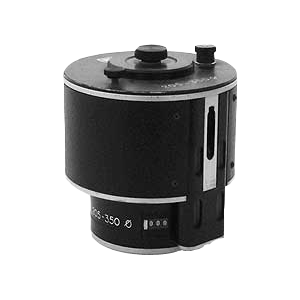
1980 - Seitz 28mm
This panorama camera featured a wide-angle 28mm lens and used 35mm film, both conceived for detection of cracks in nuclear power plants.
-

1981 - Seitz 75mm camera NATO / Alpa
Originally built for NATO and designed by Seitz, this model was later manufactured under license by Alpa Pignons S.A. Ballaigues in serial production.
-

1982 - Seitz 150 degree camera
Used for aerial photography, this swing-lens camera used 5 inch film with a 100mm lens for a 150° horizontal field of view.
-

1982 - Seitz turntable camera
The turntable camera - a new macro photography design with rotating turntable and fixed camera to scan the surface of cylindrical objects. This camera was commissioned by Bundeskriminalamt Wiesbaden in Germany.
-

1983 - Seitz Prakla 18mm stereo
Designed for Prakla Seismos - a geodesy company - this panoramic tube camera consisted of an 18mm stereo lens with 35mm film and inbuilt light. It was pumped with pressure to a depth of 3,000 metres to capture images of caves.
-
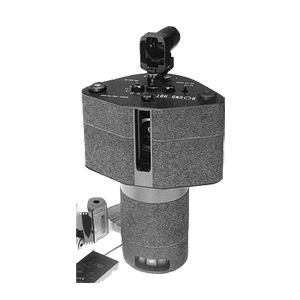
1984 - Seitz 65mm
With its 65mm lens projecting on 70mm film, this camera was a popular and long-lasting tool for professional photographers and opened a new market for Seitz. This model was later modified to accomodate 120/220 film as well.
-

1985 - Roundshot 65mm
Introduced as a successor model of the 1984 version, this panorama camera with 65mm lens was now using 5 inch film with very big spools (15m film length).
-

1985 - Panoscope - Roundshot 35-35
A revolutionary design, using 35mm lens on 35mm film, very compact with external control unit. This camera was originally marketed under the Panoscope brand. Due to a brand dispute it was later labelled "roundshot" and became a global best-seller.
-

1986 - Roundshot engine camera
Commissioned for Volkswagen, this compact tube camera with inbuilt light had a diameter of 78mm and was used to inspect engines.
-

1986 - Seitz enlarger
Since the 65mm camera produced very long images on film, Seitz built a special enlarger that could handle this exceptionally long format. It accommodated film up to 100cm long and was a popular equipment in specialised studios in North America and Asia.
-

1987 - Roundshot Super camera prototype
Built by request for a customer in Australia, Seitz built a camera with interchangeable Sinar large format lenses. It used 5 inch film and allowed both shift and tilt.
-

1987 - Seitz Minox
Ausgelegt auf minimalste Dimensionen verwendete dieses Modell ein 10mm Objektiv und Minox Film. Die Seitz Minox Kamera war - und ist - die weltweit kleinste Panorama-Kamera.
-

1990 - Seitz panorama projector
This 150° projection device with 8 lenses transported 35mm film on a plane to create a multimedia show. It was used at the Schilthorn mountain resort as a tourist attraction.
-

1990 - Seitz 250mm camera for Dornier
Commissioned by Dornier Friedrichshafen, this model used a 250mm lens and 70mm film. It was used to capture images for flight simulators.
-

1992 - Roundshot Super camera
Based on the 1987 prototype, this camera had again interchangeable lenses ranging from 40mm to 500mm. Compared to the previous model, it was much more compact and also allowed new shooting modes such as turntable and linear scans.
-

1993 - Roundshot 21mm stereo
The 21mm stereo was a compact panorama stereo camera using two 21mm Elmarit lenses on 35mm film.
-
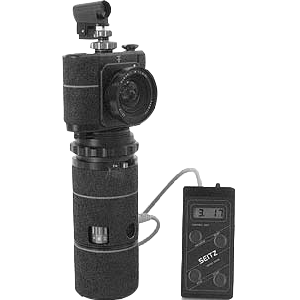
1993 - Roundshot 21-28-35
This model allowed changing the camera head to use lenses of 21mm, 28mm and 35mm focal length projecting on 35mm film.
-

1994 - Roundshot 35/35
Introduced as an update of the successful 1985 camera, this new version now had stronger built-in batteries and featured a much reduced external control unit.
-
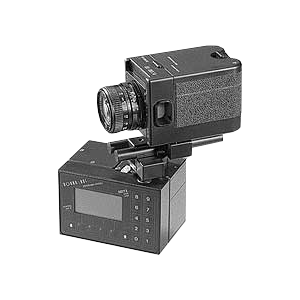
1994 - Roundshot Super 35
The Super 35 camera was the first Seitz model which had an integrated control unit and a display. It allowed mounting interchangeable Nikon or Leica lenses and used 35mm film. Due to its compact dimensions and advanced software, this model was a big leap in Seitz technology.
-

1994 - Roundshot 35mm aerial
Built on the 1984 Roundshot 35-35, this model had a round shape ideal for aerial photography.
-

1994 - Roundshot 65 EL
As a successor model of the Roundshot 65-70, the 65 EL was now equipped with an electronic motor for accurate film transport.
-

1996 - Roundshot Super 220 VR
Seitz transformed the Super 35 camera into a model which allowed the use of medium format 120/220 film and a wide variety of medium and small format lenses. This model was a very versatile camera, enabling 360° panorama photography, linear, moving and turntable scans. It became a top selling product.
-

1996 - ALPA 12 prototype
Having acquired the brand rights of former Alpa Pignons S.A. Ballaigues, Seitz customers Thomas Weber and Ursula Capaul gave life to a new generation of medium format ALPA cameras.
-

1997 - Roundshot Super 70
With this model Seitz again enhanced image quality, now accomodating 70mm roll film.
-
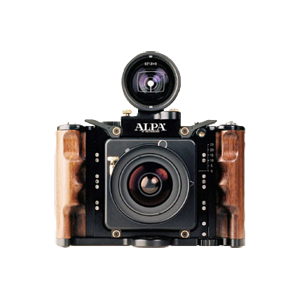
1998 - ALPA 12 WA + SWA
Two years after the first prototype, ALPA of Switzerland - owned by Thomas Weber + Ursula Capaul - presented their first medium format ALPA 12 WA and SWA cameras.
-

2000 - Roundshot Super Digital
Seitz moved into the digital age by introducing its first digital panorama camera. This model was equipped with a 2,700 pixel linear RGB sensor and was connected to a computer by USB.
-

2001 - Roundshot 28-220 Outdoor
Conceived as a fast and very compact camera, this model featured a 28mm lens and used 120/220 medium format film. It was ideal for hand-held action shots with fast exposure speeds.
-

2002 - ALPA 12 ST / SST
This camera was introduced by ALPA for studio photography for a dual purpose: with film back and ground glass for easier focusing as well as with digital back allowing lateral and vertical shift for stitching.
-

2002 - Roundshot VR Drive
As a first manufacturer Seitz introduced an automated VR robot for panoramic stitching.
This first generation of VR Drive used a motor for horizontal movement and automatic triggering of the camera.
The vertical movement was done manually by tilting.
-

2002 - Roundshot 28-220
Built on the Roundshot 28-220 Outdoor, this extended version also allowed slow exposure speeds and featured an integrated LCD display and extended software.
-
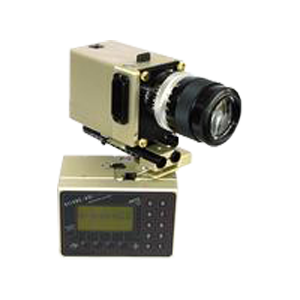
2004 - Roundshot Super 60
Especially designed for the Asian market, this Super camera model contained a software in Chinese and had a finish in gold.
-

2004 - Roundshot Livecam gen 1
With its 360° webcam technology Seitz entered a new market.
A high resolution panorama camera was built into a waterproof case and created high resolution scans every few minutes.
The system included the camera, cabling, computer with capture software and built-in webserver.
-
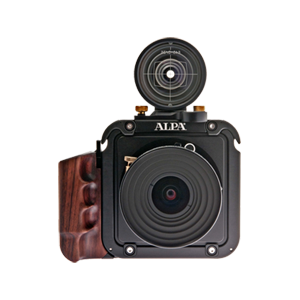
2005 - ALPA 12 TC
Reduced to the max! The new ALPA 12 TC - travel compact - had been designed by ALPA for minimum size and weight - ideal for travel photography with film or digital back.
-
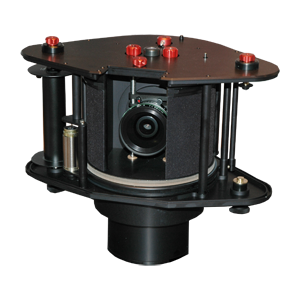
2005 - Roundshot 90mm
On special request Seitz manufacturered a last series of cameras using 5 inch film and a 90mm lens.
-
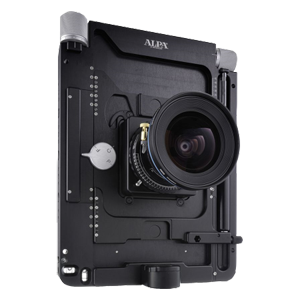
2006 - ALPA 12 XY
Designed by ALPA as a new studio camera, it enabled a maximum shift in both directions (X/Y): vertically 70mm, horizontally 50mm.
The camera was a popular tool for high quality reproductions as well as for landscape, automobile and architecture photography.
-

2006 - Roundshot Weathercam
Building on the first success of the Roundshot Livecam, Seitz complemented this product by adding a weather station.
-
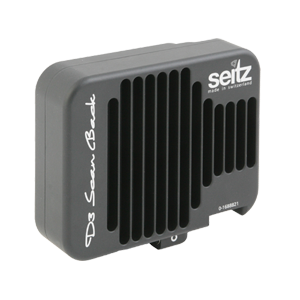
2007 - Seitz D3 digital scan back
Thanks to the development of this new TDI scanning technology, Seitz reestablished its role as a market leader in 360° panoramic photography equipment.
The image sensor was manufactured by DALSA exclusively for Seitz, allowed data capture of 300 MB/second and a scanning speed 100x faster than conventional 3-linear CCD scanners.
The scan back was interchangeable between the Seitz 6x17 Digital and the Roundshot D3 panorama camera.
-
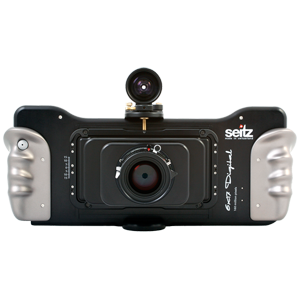
2007 - Seitz 6x17 Digital
Seitz intoduced the world's first digital 6x17 camera.
Equipped with Schneider 90mm, 150mm and 250mm lenses, it created a 160 million pixel image by a one second scan.
A tethered tablet computer was used for camera control, image preview and storage.
-
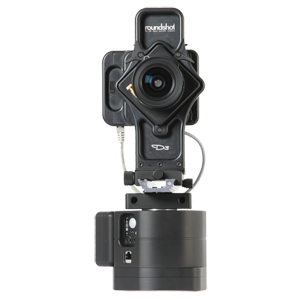
2007 - Roundshot D3
A 360° panorama in only 2 to 3 seconds at full resolution - up to gigapixel!
This camera used medium or small format lenses.
The camera was tethered to a tablet PC for image control, image preview and storage.
-

2008 - ALPA 12 MAX
Building on the ALPA 12 XY, ALPA conceived this new camera to allow maximum shift in both vertical (43mm) and horizontal (36mm) dimension.
With its extensive shift options and more compact dimensions, the ALPA 12 MAX became a popular camera both for tripod applications or handheld photography.
-

2009 - Roundshot Livecam gen 2
A new generation of Livecam was born.
This new camera used a trilinear RGB sensor ideal for landscape photography with Nikon lenses.
Using the same software platform as its sister camera - the Roundshot D3 - this camera was connected by IP within a network to a computer.
-
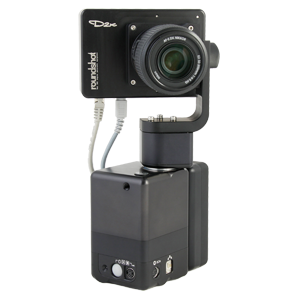
2010 - Roundshot D2x
Conceived as a mobile panorama camera, the Roundshot D2x was introduced for 360° VR photography with Nikon lenses.
The camera technology was built on the same platform as the Roundshot Livecam while using a Roundshot D3 motor unit.
-

2010 - ALPA 12 STC
Stitching/Shift Travel Compact - with this formula ALPA set a new benchmark for compact technical cameras, especially for handheld equipment.
What was previously only possible in the studio was now a reality for many new applications.
-

2011 - Roundshot VR Drive gen 2
Seitz introduced the second generation of VR Drive with two motors for horizontal and vertical movement.
It was equipped with a touch screen and included various software modes for specific tasks.
This allowed not only cylindrical or spherical panoramas, but also object movies, timelapse and video projects as well as 32-bit HDR images - all controlled by the VR Drive.
-

2012 - ALPA 12 FPS
With the introduction of the FPS - Focal Plane Shutter - ALPA opened a completely new chapter in its history.
Equipped with an optional shutter and aperture control, this camera allowed not only the use of medium format lenses (also Hasselblad, Mamiya 645), but also of a wide variety of Canon or Nikon lenses.
Free choice of lens coupled with free choice of format - only limited by the lens image circle and sensor size.
-

2014 - Roundshot VR Drive Metric
Introduced for the first time to the public in September 2014 at photokina, the VR Drive Metric with FOVEX PanoMaker software captured and stitched a 192 million pixel sphere in RGB or HDR in just 2 to 4 minutes.
The Metric used a Canon EOS 6D digital SLR camera together with VR hardware built on the successful VR Drive product.
Thanks to system calibration the resulting 180x360° spheres created a geometrically perfect output for 3D measurement projects.
-
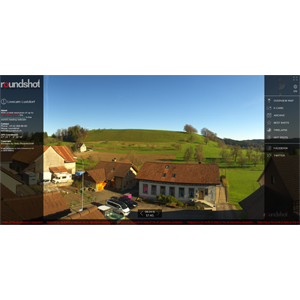
2015 - Roundshot Livecam Content Software
Due to the rapid expansion of the Livecam network, Seitz developed a new Livecam content software consisting of a modern website design in html5, dedicated smartphone + tablet apps (global + customer), screen saver software (global + customer) as well as a completely redesigned backend (CMS) tool.
-
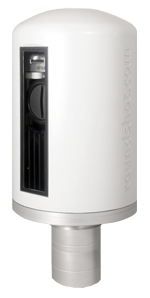
2016 - Roundshot Livecam gen 3
In its 3rd generation the 360° Livecam was presented in a completely new design.
Thanks to an integrated Linux computer with wifi and 3G/4G, fully automatic camera control with tilt and more compact dimensions, installation had become easy.
In addition, the optional full-HD video camera enabled many new applications.
-

2016 - FOVEX Metric
The VR Drive Metric had been reengineered and was now called FOVEX Metric. Equipped with a Nikon D750 with a 20mm lens, this new hardware created highly accurate 180x360° panoramas for photography and 3D applications. Combined with the new FOVEX PanoMaker + 360s software it enabled 3D measurement and the output of 3D models and coloured 3D point clouds.
-

2018 - ALPA 12 PLUS
After 12 years of experience with their ALPA 12 MAX, XY and STC products, ALPA introduced the new ALPA 12 PLUS.
This camera allowed maximum horizontal and vertical shift (+/- 20mm) as well as tilt/swing of the lens.
-

2019 - Livecam One
The Roundshot One was designed as a single image webcam with an angle of view of up to 100°.
It generated images with a resolution of 24 million pixels in 24/7 operation.
-
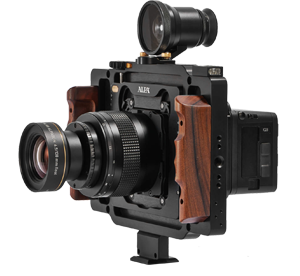
2019 - ALPA 12 PANO
With a maximum shift distance of 35mm to the right/left (70mm in total), this new camera allowed undistorted stitching of panoramas without rotation.
The camera used 70mm, 90mm or 138mm ALPA Alpagon lenses with a very large image circle.
A vertical shift of +/- 10mm was possible.
-

2019 - Roundshot Livecam gen 4
The 4th generation Livecam allowed new brilliant night images (24/7), a significantly increased resolution up to 144 million pixels as well as high-quality 4k videos - all this in a single webcam system.
The panoramas were now not scanned but created by the 360° stitching of individual images built into the camera.
The onboard Linux computer allowed maximum computing power for stitching and subsequent image processing processes.
-

2021 - new Livecam frontend software
With the rapidly developing 360° webcam technology, Seitz expanded its Livecam software platform in parallel.
The introduction of the new frontend applications enabled flexible display for desktop + mobile devices in a single mobile-responsive website, much faster application loading and a new, fresh design.
-

2022 - Roundshot Livecam gen 5 solar
This Livecam model came with a solar panel with charge controller and battery, which made it possible to install the camera in remote locations without power supply.
Also on board was an autonomous power management system that activated or hibernated the camera and computer depending on the available charge.
The data from the solar system, such as power generation, battery charge status and the quality of the LTE 4G connection, were visualized via Roundshot Cloud.
-

2022 - Roundshot Livecam gen 5
The new Livecam gen 5 camera was based on the gen 4 camera technology, was optimized for minimum power consumption and was equipped with a mechanical instead of a motorized tilt.
Like her big sister, she worked 24 hours a day and generated high-resolution panoramas and 4k videos.
-

2023 - Roundshot Livecam One S
With the Livecam One S - or "speed" - model, a Roundshot webcam for the first time approached the streaming or live area - and this in full HD resolution.
The camera generated a single image every 10 seconds, which was loaded thanks to RAM memory directly into the Roundshot Cloud for visualization.
This new model was specially designed for snow and weather observation.